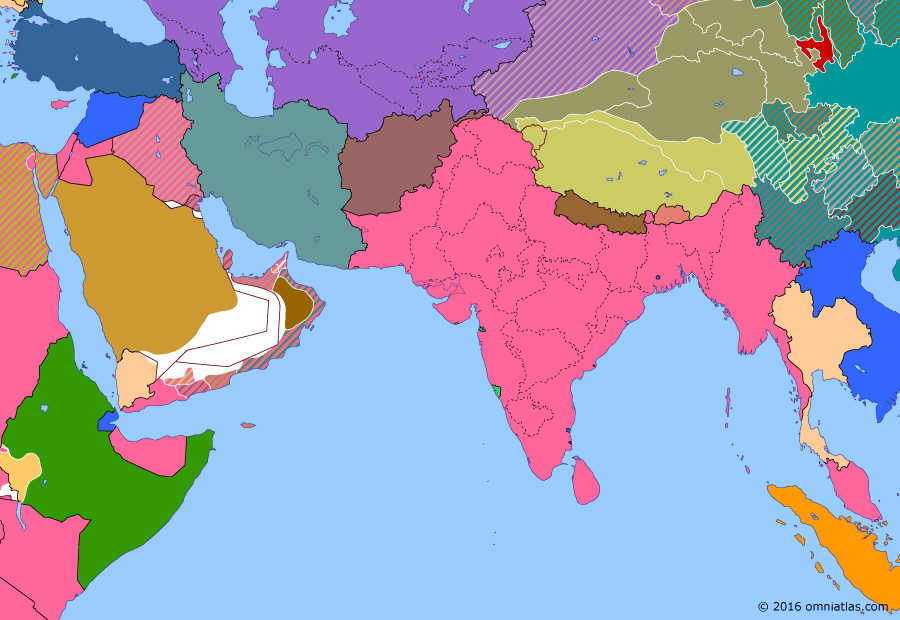Southern Asia 1936: Stalin Constitution
5 December 1936
5 Dec 1936
Arrival of the New Order
1880–1914 Pax Britannica
1914–1917 Great War in the Middle East
1917–1918 Fall of the Ottoman Empire
1918–1923 Anglo-French Overreach
1923–1934 Rising Nationalism
1934–1940 Arrival of the New Order
1940–1941 World War II: The Middle Eastern Theater
1941–1945 World War II: The South-East Asian Theater
1945–pres Independence
Stalin Constitution
Right-wing expansionism in the 1930s - exemplified by the Japanese invasion of Manchuria, the Italian invasion of Ethiopia, and Hitler's rise in Germany - prompted Joseph Stalin, leader of the Soviet Union, to seek better relations with the Western democracies. In 1936 the Soviets adopted a new constitution, reforming the Soviet state and creating a number of new Soviet Socialist Republics.
